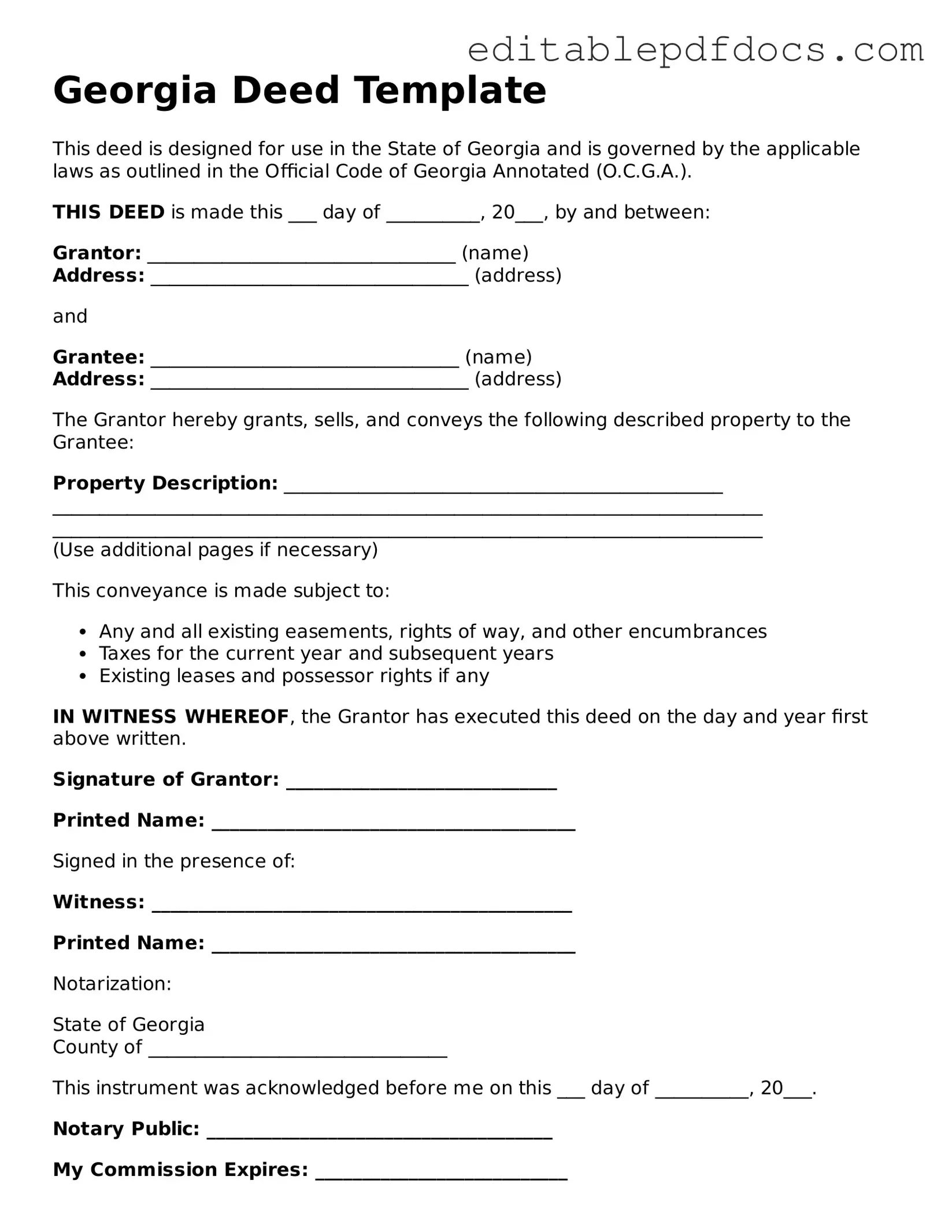Filling out a Georgia Deed form can seem straightforward, but many people make common mistakes that can lead to complications. One frequent error is not including the correct names of the parties involved. Ensure that the names of the grantor (the seller) and grantee (the buyer) are spelled correctly and match the names on their identification documents. Omitting or misspelling a name can invalidate the deed.
Another mistake is failing to provide a complete legal description of the property. This description should be precise and detailed, allowing anyone to identify the property without ambiguity. Relying on vague terms or general descriptions can cause issues down the line, especially if disputes arise regarding property boundaries.
Many individuals also overlook the requirement for notarization. A Georgia Deed must be signed in the presence of a notary public to be legally binding. Skipping this step can render the document ineffective. Always check that the notary has signed and stamped the document before submission.
Additionally, people often forget to include the date of the transaction. The date is essential for establishing the timeline of ownership and can affect the validity of the deed. Be sure to write the date clearly in the designated space on the form.
Another common oversight is neglecting to pay the appropriate transfer tax. Georgia requires a tax to be paid when a deed is recorded. Not including this payment can delay the recording process and may lead to additional fees. Always verify the current tax rates to ensure compliance.
Some filers mistakenly believe that a single copy of the deed is sufficient. It is crucial to retain copies for personal records and to provide one to each party involved in the transaction. Keeping accurate records can prevent misunderstandings and provide proof of ownership.
Finally, individuals sometimes fail to file the deed with the appropriate county office. After completing the form, it must be recorded in the county where the property is located. Not filing can lead to complications in establishing ownership and may affect future transactions. Always confirm that the deed has been properly recorded.
